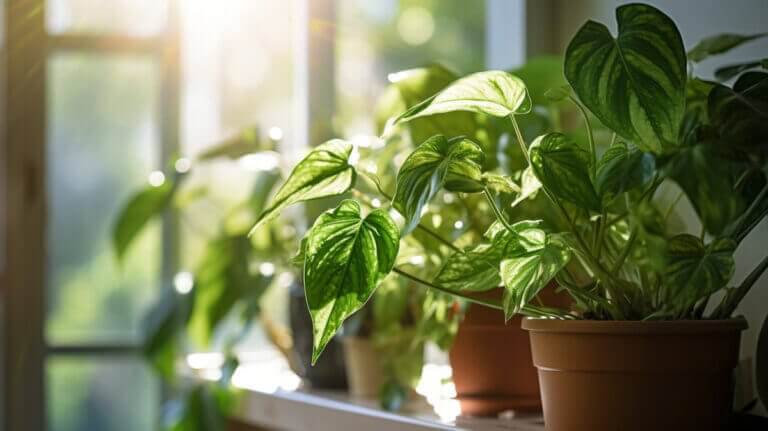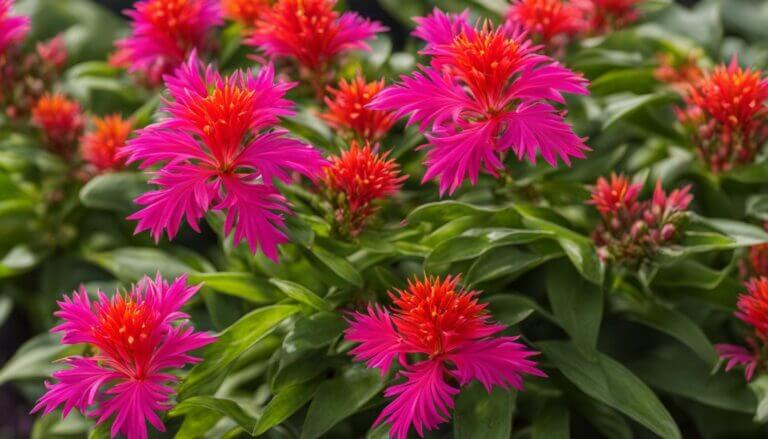How To Store Elephant Ear Bulbs for Winter? Best Practices To Overwinter Elephant Ears Plant
Elephant ear bulbs, or tubers, require special care during the winter months as they are not winter-hardy. To ensure the health and longevity of your elephant ear bulbs, it’s important to know how to store them properly. In this article, I will guide you through the best practices for storing elephant ear bulbs and provide helpful tips to keep them healthy throughout the winter season.
When it comes to overwintering elephant ear bulbs, you have two options: bringing them indoors or storing them. Each method has its own set of steps and considerations. If you choose to bring them indoors, proper lighting, temperature, and humidity are crucial. On the other hand, if you prefer to store the bulbs, there are specific steps you need to follow to prepare them for storage.
Key Takeaways:
- Elephant ear bulbs require protection during the colder winter months.
- Options for overwintering include bringing them indoors or storing them.
- Indoor care involves providing adequate lighting, temperature, and humidity.
- Storing the bulbs requires proper cleaning, trimming, drying, and storage conditions.
- By following best practices, you can enjoy your elephant ear bulbs year after year.
When to Dig Up Elephant Ear Bulbs and Preparing Elephant Ear Bulbs For Storage
Knowing the right time to dig up your elephant ear bulbs is crucial for their successful storage during the winter months. The timing can vary depending on your climate, but as a general rule, it’s best to dig them up 4-6 weeks before the first expected frost. This allows the bulbs enough time to go dormant and prepare for the colder temperatures. By following these steps, you can ensure the health and longevity of your elephant ear bulbs for the next growing season.
Step 1: Cutting and Cleaning
To prepare your elephant ear bulbs for storage, start by cutting off the stems and removing as much foliage as possible. This helps to prevent rot and reduces the risk of disease during storage. Once the stems are removed, gently lift the bulbs from the soil, taking care not to damage or slice them. Shake off any excess dirt, but avoid washing them as this can introduce excess moisture.
Step 2: Drying and Trimming
After lifting the bulbs, allow them to air dry for 1-2 days. This helps to further remove any excess moisture and prevent the growth of mold or fungus during storage. Once dry, use a soft brush to clean off any remaining dirt. Take this opportunity to inspect the bulbs for any signs of damage or rot. If you notice any affected areas, carefully trim them away using a clean, sharp knife or pruning shears.
Step 3: Curing and Storing
After cleaning and trimming, it’s important to cure the elephant ear bulbs before storing them. Place the bulbs in a warm, dry spot for 1-2 weeks to ensure they are fully dried out. This step helps to prevent rot and prolong the storage life of the bulbs. To further protect them from disease, dust the bulbs with a fungicide before storing.
When it comes to storing the elephant ear bulbs, there are a few options. You can place them in a breathable container with slightly moist peat moss or store them in perforated paper bags. Whichever method you choose, ensure that the storage location is cool and dry, with temperatures around 50-55°F (10-13°C). Check on the bulbs periodically throughout the winter to ensure they remain healthy and discard any that show signs of damage or rot.
By following these steps to dig up and prepare your elephant ear bulbs for storage, you can ensure their health and readiness for replanting in the spring. Take the time to properly care for your bulbs during the winter months, and you’ll be rewarded with their stunning beauty year after year.
Indoor Care for Elephant Ear Bulbs During Winter
When the colder months arrive, bringing your elephant ear bulbs indoors is a great way to protect them and ensure their survival. To successfully care for your elephant ear bulbs indoors, follow these simple steps.
First, find a bright, south-facing window where your bulbs can receive ample sunlight. This will help them maintain their growth and stay healthy throughout the winter. Additionally, it is important to provide warm temperatures in the range of 70s. This will mimic their natural tropical habitat and promote optimal growth.
Humidity is key for elephant ear bulbs. To provide humidity, you can use a humidifier in the room where your bulbs are located. Another method is to place the pots on trays filled with pebbles and water. As the water evaporates, it creates a humid environment around the bulbs. Remember to monitor the soil moisture and water the bulbs when the top inch of soil feels dry.
Lastly, keep a close eye on your elephant ear bulbs for any signs of pests or diseases. Common pests include spider mites and aphids, which can be controlled with insecticidal soap. If you notice any yellowing leaves or spots, it could be a sign of fungal disease. Treat it with a fungicide specifically formulated for houseplants.
FAQ
How should I store elephant ear bulbs overwinter?
There are two options for overwintering elephant ear bulbs: bringing them indoors or storing them. If you choose to store them, dig them up after the first frost, clean the bulbs, trim the foliage, dry the tubers, and store them in a cool, dry place. If you choose to bring them indoors, place them in a bright, south-facing window with temperatures in the 70s and provide adequate humidity.
When should I dig up elephant ear bulbs and how do I overwinter elephant ears?
Dig up the bulbs 4-6 weeks before the first expected frost. Cut off the stems, remove foliage, gently lift the tubers without damaging them, shake off excess dirt, air dry for 1-2 days, clean with a soft brush, inspect for damage or rot and trim affected areas, cure in a warm, dry spot for 1-2 weeks, dust with fungicide, and store in a breathable container with slightly moist peat moss or in perforated paper bags in a cool, dry place.
How do I care for elephant ear plant bulbs indoors during winter?
Place them in a bright, south-facing window, maintain warm temperatures in the 70s, provide high humidity using a humidifier or pebble tray, monitor soil moisture and water when the top inch feels dry, watch for pests or diseases, and treat them accordingly.
How do I store my elephant ear bulbs effectively for the winter?
To store your elephant ear bulbs effectively for the winter, keep them in a cool, dry place with good air circulation. This will help the bulbs remain dormant and healthy until it’s time to plant them again.
How do I protect my elephant ear bulbs in the winter?
To protect your elephant ear bulbs in the winter, store them in a cool, dry place. If the bulbs are left in the ground, cover the area with a thick layer of mulch to protect the bulbs from freezing temperatures.
How do I keep my elephant ears healthy throughout the winter months?
To keep your elephant ears healthy throughout the winter months, make sure to store the bulbs in a cool, dry place and check them regularly for signs of disease or rot.
How do I ensure my elephant ear bulbs are ready for planting?
To ensure your elephant ear bulbs are ready for planting, check them for signs of disease or rot and discard any affected bulbs immediately to prevent the spread of disease.







